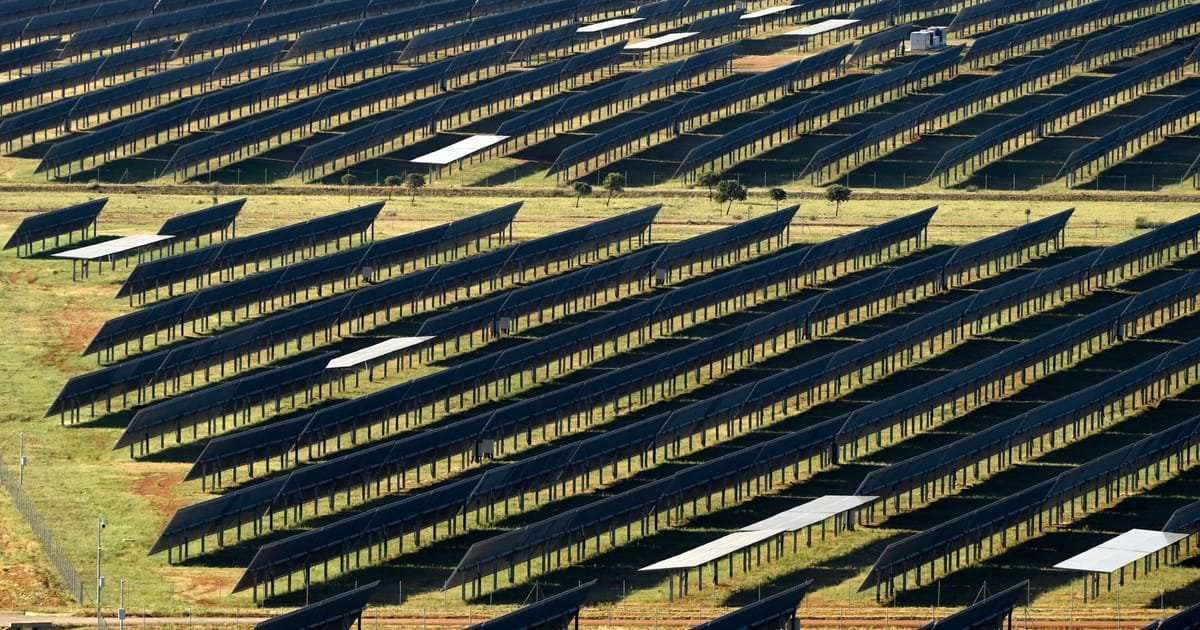Press play to listen to this article Voiced by artificial intelligence.
BRUSSELS — Explosive growth in solar power means most EU countries will hit their 2030 renewable energy targets ahead of time, new data shows, fuelling optimism on efforts to bring down global emissions.
The bloc added 41 gigawatts of new solar capacity in 2022 — a 40 percent increase on 2021. That's expected to rise to over 50 GW this year.
Some 23 countries are slated to reach their solar installation targets by 2027, according to data from the SolarPower Europe lobby group based on the latest available national targets and shared with POLITICO.
That mirrors a global trend, and means millions more tons of greenhouse gas emissions are being saved each year than predicted.
“[Solar] development has been spectacular,” said Javier Esparrago, an energy expert at the European Environment Agency, arguing that the fast rollout ultimately “all boils down to [the] costs” of solar power per kilowatt-hour plummeting 90 percent in the past decade.
In part, the explosive growth is down to plummeting prices for solar panels being mass-produced in China. The war in Ukraine also created a major incentive for countries to push ahead with solar installations as a way to lower their dependency on Russian energy.
But those gains are also raising questions about the sector's future.
As solar becomes increasingly widespread and electricity prices plummet in the middle of the day when the sun is brightest, some see a risk that the incentive to deploy solar power also decreases, said Esparrago.
That makes grid improvements and the rapid rollout of storage technologies like batteries crucial, experts argue. But the EU is still lagging behind in that area.
Rapid solar growth has blindsided politicians and analysts — and could mean good news for global climate efforts.
In June, the International Energy Agency was forced to upwardly revise its renewable energy deployment forecasts for the EU by 38 percent, most of which was driven by a rise in residential and commercial solar installations.
“To be honest, we've never been very good … our most optimistic predictions have nearly always undershot the market,” said Jenny Chase, a solar analyst at BloombergNEF who has closely followed the sector for almost two decades.
That’s down to difficulties in predicting the cost and efficiency improvements in Chinese manufacturing of solar panels each year, Chase said, and using data that quickly goes out of date. It's also tricky to understand when solar rollout will eventually plateau.
But prediction errors could also mean climate change efforts are going better than expected worldwide — especially as major economies join the race to install more solar.
Last year, China installed 107 GW of solar output — roughly equivalent to the entire historical installed capacity of the U.S. — and is likely to add around double that in 2023, according to Chase.
In 2022, solar deployment meant the world saved 230 million tons of CO2 emissions, the IEA found, around double the annual emissions of Belgium.
Growth continually beating expectations means “at the global level [emissions] have been reduced and highly mitigated,” said the EEA’s Esparrago.
It's unclear how long solar deployment can continue at the same breakneck speed.
In some countries a lack of flexibility in the grid means grid operators often order solar plants to shutter at times of low demand, effectively wasting electricity.
This week, 19 European solar and renewables associations wrote to the European Commission to express their concern about the practice, citing its use in countries like Poland and the Czech Republic.
Improving congestion in the grid and training workers in the solar sector, which is estimated to need 1 million workers in the EU by 2030, is both “a challenge and an opportunity” that requires more vocational training schemes, said Raffaele Rossi, head of market intelligence at SolarPower Europe.
As the EU seeks to reduce its reliance on China for solar production and bring manufacturing back home, another risk is that it creates overly stringent criteria for imports, slowing down growth, Rossi said.
That’s why the Commission’s proposed Net Zero Industry Act, which sets new homegrown solar manufacturing targets by 2030, needs to be developed in “a balanced manner” that also includes greater EU subsidies, he argued.
For now, EU countries should focus on ramping up their 2030 solar targets, Rossi said, to encourage greater investment in the sector and wider clean energy system.
“Setting a target that is reasonable and attainable, but at the same time ambitious, is important for the evolution of the sector.”

FarmhouseFan on August 12nd, 2023 at 16:51 UTC »
After seeing the food supply news earlier, this helped me feel better. It is such an ominous and unnerving era we live in. It feels so unstable and on the brink all the time. It's like some sort of enormous event has been on the horizon for a decade, but it just won't get here. More steps for good progress like this, please.
Im_Lucy_B on August 12nd, 2023 at 16:11 UTC »
Is that a shred of hope im feeling? It feels alien. Im not sure what to do next lol.
FrenchQuarterPounder on August 12nd, 2023 at 15:30 UTC »
Nice, we like this